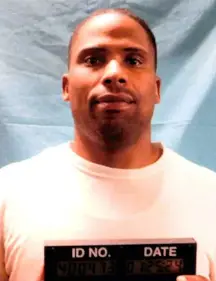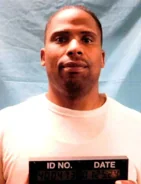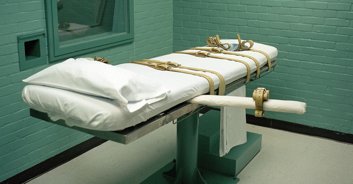The husband of a woman who was murdered has spoken out following her killer being executed using a controversial method.

Jessie Hoffman Jr. was executed on Tuesday evening at the Louisiana State Penitentiary in Angola, becoming the first inmate in the state to die by nitrogen gas—a method that has been widely condemned as “cruel” and “experimental.”
Hoffman, 46, was convicted for the 1996 rape and murder of Mary ‘Molly’ Elliott, a 28-year-old advertising executive from New Orleans, per Sky News.
The day before Thanksgiving 1996, Elliott had just finished work at Peter A. Mayer Advertising Inc. in the French Quarter and was heading to her car to meet her husband for dinner.
But she never made it.
Hoffman, then 18, had been working at the Sheraton hotel garage for just two weeks when he kidnapped Elliott at gunpoint and forced her to withdraw $200 from an ATM.
Even if she had been released at that point, prosecutors said it would have been “the most horrific night of her life.”
"The ATM video tape shows the terror on Ms. Elliott’s face as she withdrew money from her account, and Hoffman can be seen standing next to his victim," prosecutors said in court records.
Hoffman then drove Elliott to a remote area of St. Tammany Parish, where she begged for her life—but he ignored her pleas.
Prosecutors described her final moments as a "death march."
"Her death march ultimately ended at a small, makeshift dock at the end of this path, where she was forced to kneel and shot in the head, execution-style," court records state.

Her naked body was found Thanksgiving morning near the East Pearl River.
Hoffman later claimed that he had not raped Elliott, arguing that she had "offered herself to him" and that his gun had accidentally fired. The jury rejected his defense, convicting him of first-degree murder and recommending the death penalty.
Elliott’s husband, Andy Elliott, described her as a brilliant, kind, and loving person who had a passion for animals and practical jokes.
"Molly was a cherished person who missed out on motherhood, a promising and successful career, and a life in the country on the property we bought together," he told USA TODAY.
"Hers was a life that was so full of hope and promise for a beautiful future. The loss of Molly is a scar we will forever carry, and it will never heal."
Her mother, Roxie Stouffer, recalled how Molly’s presence lit up a room.
"When Molly walked into a room and smiled, the whole room just lights up," she said in court.
Even after nearly 30 years, Andy Elliott admitted that Hoffman’s execution would not bring closure.
"Anyone who has experienced a tragedy of this magnitude will recognize the absolute truth − Molly’s and my families and friends lost a great human being to a senseless series of crimes, the reasons for which we still don’t know," he said.
"The pain is something we simply have learned to live with."
Hoffman’s execution was carried out using nitrogen gas, a controversial new method that deprives the body of oxygen, causing suffocation.
Despite Louisiana banning nitrogen gas euthanasia for animals—because conscious animals experience extreme distress—it was approved for human executions.
Hoffman’s defense team fought to stop the execution, arguing it violated his constitutional rights and his Buddhist faith, but the courts ultimately allowed it to proceed.
He declined both a final meal and a final statement before being strapped to a gurney and fitted with a tight full-face respirator mask.
At 6:21PM, pure nitrogen gas began flowing into the mask.
Inside the execution chamber, media witnesses described an eerie silence.
"There was nothing that occurred during the process that made me think, ‘Was that right? Was that how it was supposed to go?’" said Gina Swanson, a WDSU reporter who witnessed the execution.
Two reporters noted that Hoffman was covered with a grey plush blanket and that his spiritual adviser was present.
Before the curtains closed, Buddhist chanting could be heard.
As the gas flowed, Hoffman’s hands clenched, his body twitched, and his head slightly moved.
Swanson closely watched his breathing, which appeared to stop at 6:37PM.
Shortly after, the chamber’s curtains briefly closed, and when they reopened, Hoffman was pronounced dead.
For Andy Elliott, the execution did not bring closure—only an end to decades of uncertainty.
"I have become indifferent to the death penalty vs. life in prison without possibility of parole," he admitted.
"But, his death will not provide closure."
His only wish was to end the constant cycle of reliving the tragedy every time Hoffman’s execution was debated.
"All we want is finality, so we can stop dreading the reminder of the tragedy every time the subject of his execution re-emerges."
"My sincere hope is either to get the execution done or commute his sentence to life in prison without parole, one or the other, as soon as possible. Then, we can put Molly’s brutal death in the past."
"That’s not closure, but it’s the best we can hope for."





